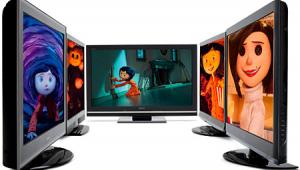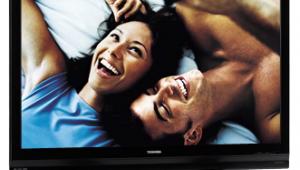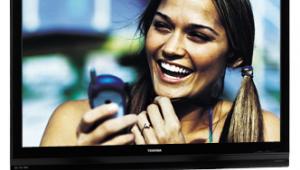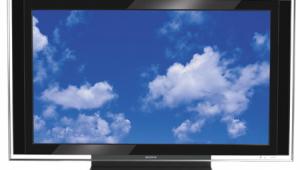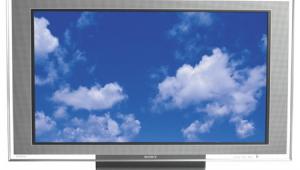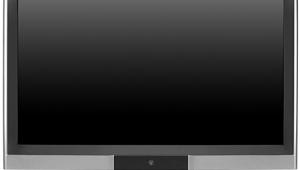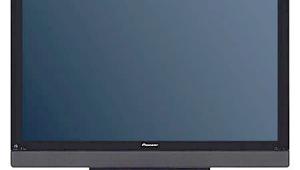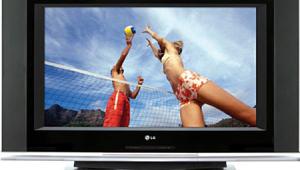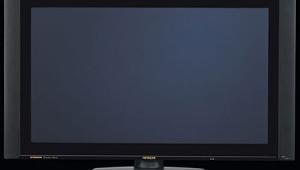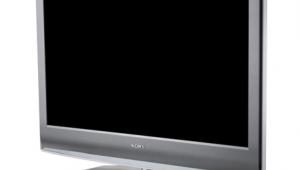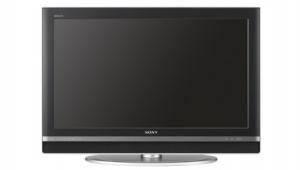Sharp Aquos LC-45GX6U integrated digital HDTV Measurements

The Aquos LC-45GX6U can be set up for high-quality images. However, you'll need to experiment not only with the traditional "big five" image controls—Brightness, Contrast, Saturation, Hue, and Sharpness—but also fiddle with the adjustable-brightness backlight.
Going with the default factory backlight settings and adjusting Brightness and Contrast for the best gray scale, I measured 151.75 nits (44.37 footlamberts) with a full-white screen. That reading varied from a low of 135.55 nits (39.6fL) in Movie mode to an eye-popping 284 nits (83fL) in Dynamic mode.
Contrast readings were never high in any mode (Sharp claims 800:1 peak for this TV). After my brightness measurements, I took contrast measurements of 114:1 ANSI lumens average and 124:1 peak (ANSI, not on-off).
Because I had plenty of light output to spare, I reduced the backlight intensity by about 40% to get an average brightness reading of 90 nits (26.3fL) and black-level readings as low as 0.6 nit (0.175fL). Now my contrast measurements rose to 136:1 average and 157:1 peak (ANSI), respectively. Some current-model plasma monitors I've tested would be hard-pressed to do better!
Because there are no RGB drive or bias controls in any of the LC-45GX6U's video menus, I selected the Standard gamma and took white-balance measurements using the Middle and Middle Low factory white-balance presets. The settings produced similarly shaped gray-scale tracking plots (see figure). Darker grays started out pretty "cold," or blue, and the color temperature dropped as the brightness increased. The Middle Low setting came closest to following a D6500 track at most levels of brightness, and produced some great flesh tones for a LCD TV. Use that setting as your default and you should be pleased with the Aquos LC-45GX6U's overall picture quality.—PP
- Log in or register to post comments
